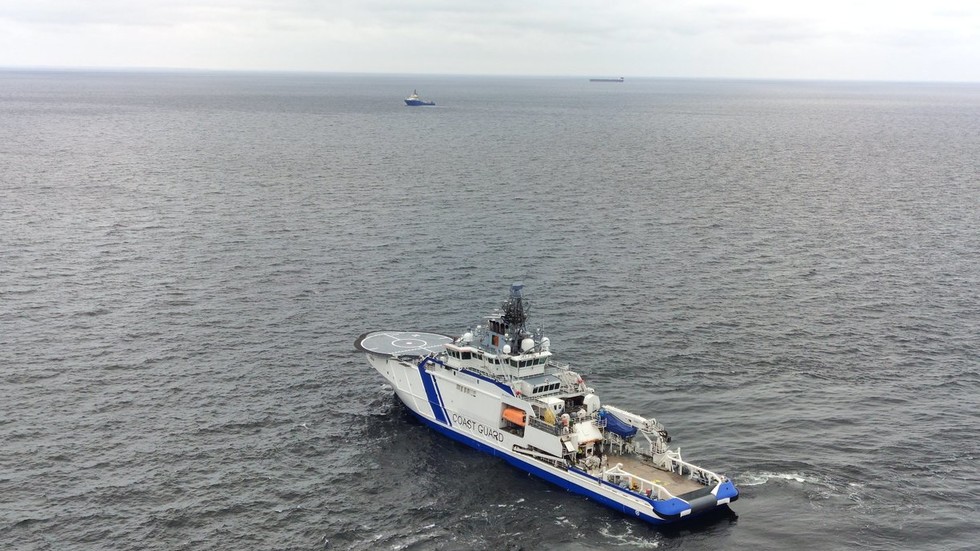Unraveling the Mystery: Baltic Sea Cable Damage Disrupts Connectivity
In a concerning development, a Russian telecom provider has reported significant damage to a crucial undersea cable in the Baltic Sea. This incident has raised alarms about regional connectivity and its broader implications in the ever-evolving digital landscape. As investigations continue, the damage not only disrupts communication lines but also prompts a deeper examination of infrastructure safety and security, particularly in a region fraught with geopolitical tensions.
The Importance of Undersea Cables
Undersea cables are the backbone of global connectivity, facilitating the transfer of data across continents. These cables carry approximately 95% of international data traffic, making them essential for everything from personal communication to global business operations. The Baltic Sea, with its strategic location connecting Eastern and Western Europe, hosts several key cables that support internet and telecommunications services in the region.
When a cable is damaged, the effects can ripple across various sectors:
- Internet Access: Service providers may experience outages or reduced speeds, affecting both consumers and businesses.
- Economic Impact: Industries reliant on stable internet connectivity, such as finance and e-commerce, can face significant disruptions.
- Geopolitical Tensions: In regions with existing conflicts, damage to critical infrastructure can escalate tensions between nations.
The Incident: What We Know So Far
The reported damage to the undersea cable transpired under circumstances that remain unclear. Initial investigations suggest that the disruption may have been caused by a ship’s anchor, but theories abound, especially given the geopolitical climate in the region. The cable in question is vital for connecting several countries, including Finland, Sweden, and the Baltic states, to the broader European network.
As telecom providers scramble to assess the extent of the damage, users are already experiencing disruptions. Reports indicate that internet speeds have plummeted, and some services have gone offline entirely. This situation highlights a critical vulnerability in digital infrastructure, prompting urgent calls for improved safety measures.
Geopolitical Implications of Cable Damage
The Baltic region has long been a focal point of geopolitical tension, particularly between Russia and NATO countries. The recent cable damage raises questions about intentional sabotage versus mere accident. Speculations about foreign interventions are not uncommon in this area, where military exercises and naval maneuvers are frequent. Any suggestion of deliberate damage could exacerbate already fraught relations.
Moreover, the incident underscores the fragility of digital infrastructure in contested regions. As nations continue to rely heavily on digital services, the security of these undersea cables becomes paramount. The potential for conflict over such infrastructure is a pressing concern, as seen in previous incidents around the world.
Infrastructure Safety and Security
As investigations unfold, the focus shifts to the safety and security of undersea cables. The global reliance on these cables necessitates robust protection strategies to mitigate risks such as:
- Natural Hazards: Earthquakes, tsunamis, and underwater landslides can damage cables, making geographical assessments crucial.
- Human Activities: Fishing, shipping, and other maritime activities pose risks to cable integrity. Awareness and regulation are essential.
- Geopolitical Risks: As noted, tensions can lead to targeted attacks on infrastructure, necessitating international cooperation on security protocols.
Response Strategies Moving Forward
To address the vulnerabilities highlighted by this incident, a multi-faceted approach is needed:
- Enhanced Monitoring: Implementing advanced monitoring systems can help detect cable damage early, allowing for rapid response.
- International Collaboration: Countries must work together to secure undersea infrastructure, sharing intelligence and best practices.
- Investment in Alternatives: Developing redundant systems and alternative routes can provide backup in case of disruptions.
By investing in these strategies, nations can bolster their digital resilience and ensure continued connectivity in the face of challenges.
Looking Ahead: The Future of Connectivity
As we move deeper into a digital age, the importance of robust and secure communication infrastructure cannot be overstated. The recent damage to the Baltic Sea cable serves as a wake-up call for nations worldwide to prioritize the safety of their digital lifelines.
In addition to strengthening physical infrastructure, there is a growing need for policies that address cybersecurity threats. The interplay between physical and digital security will be crucial in safeguarding the future of connectivity. As countries navigate these complexities, investing in innovation and security will be paramount.
Conclusion
The disruption caused by the Baltic Sea cable damage highlights a critical juncture in our digital journey. As investigations into the incident continue, the implications for connectivity and geopolitical relations remain a pressing concern. It is imperative that nations recognize the importance of their digital infrastructures and prioritize their protection against an array of potential threats. By doing so, they can ensure a secure and resilient future in an increasingly interconnected world.
See more Future Tech Daily

